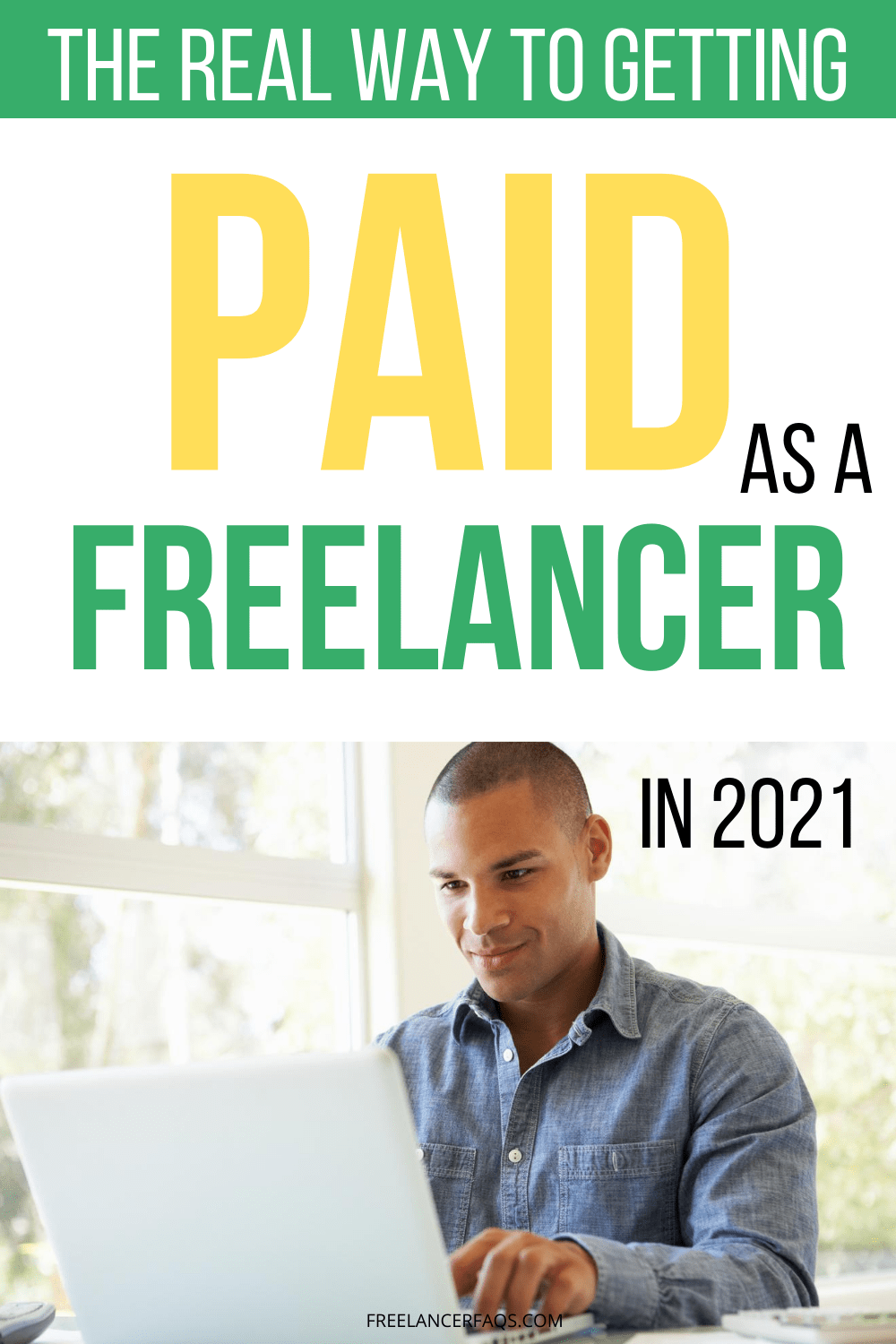There is no doubt that more people than ever before in human history are becoming freelancers.
Statistics from Upwork shows that 1 in 3 Americans is a freelancer.

And this trend isn’t ending anytime soon. There are up to 43% more freelance jobs in the second half of 2020, making 2021a year for freelancers.
There is no doubt that more people than ever before in human history are becoming freelancers.
If you are a budding freelancer you probably went into freelancing because of its benefits. You don’t have to answer to anyone. You can decide what projects you want to take on, and you can work from anywhere as long as you have a computer and an internet connection.
However, accompanying these benefits are some downsides.
As a freelancer, you will soon realize that you are responsible for chasing down your paycheck.
There is no payroll department to wire you money at the end of the week. You are a one-person business, and getting paid is now one of your biggest concerns and responsibilities.
It does not matter whether you are a newbie or an experienced freelancer.
Getting paid as a freelancer is probably the thing you are thinking about, right?
You need a sound answer to this question because you have bills to pay. These bills are not going anywhere, but your income keeps floating up and down on the seas of uncertainty.
In this article, you will learn the best tips, payment methods, and apps/software you can use to getting paid as a freelancer for 2021.
Let us get right into it.
Getting Paid as a Freelancer – 8 Tips That Can Help
1. Choose Your Clients Well
For 2021, it’s a new year and a new time to land some amazing projects.
It can be exciting when a new client approaches you with a project. But before you get giddy, you must do your homework on the client.
Go online and research about the client.
When researching, ask yourself questions like: What is the financial status of this client? Do they work well with freelancers? What do other freelancers say about them?
Look out for red flags in any new clients. If the business is on review sites like Yelp, Glassdoor, or G2 (if it is a SaaS company), you can quickly check what other people are saying about them.
Twitter is a great place to find genuine sentiments people have about a client or company.
Ask your network of freelancers (if you have) whether any of them has worked with such a client before.
If you find any, you will be able to get valuable information about whether this client will value your work and pay you as a freelancer.
Another place you can find information about a client is on their website. Check the design of the site to see whether this client is willing and able to spend money on things as simple as website design. Also, check the footer of the site to see whether the site is regularly updated.
You can also tell whether a client will pay you what you are worth as a freelancer from their job description. Many clients will want you to do a lot of work for next to nothing.
Run when you see clients like these.
A great client often offers competitive rates right off the bat or offers to provide a periodic increment as you continue to work with them.
When a client has too many red flags, you can politely decline their offer and tell them why you will not be working with them.
The reason for the polite refusal is that you do not want to burn any bridges. You never can tell whether the client might come around again with a bigger budget and better appreciation for your work as a freelancer.
Once you find a client that is a great fit, it is now time to move on to the next step to ensure that you get paid as a freelancer.
2. Have a Contract
Once you are advanced in talks with a new client, it is time to sign a contract. Although contracts are essential, many freelancers do not take it seriously. They go about their business without any legal agreement between them and their clients.
A contract will protect your interests as a freelancer.
Without one, your clients can default on payments without any repercussions. You might submit your project, and your clients will stop returning your emails or calls.
Some clients can go as far as blocking off any contact with you. Without a contract, there is little or nothing you can do when this happens.
A client’s response to signing a contract will let you know whether they want to con you or if they are ready to work with you.
This will help with getting paid as a freelancer as well as show the client you are serious about doing business with them. And they will see you as more than just a “freelancer.”
The contract should contain details about how much you charge, how you will get paid, and the period that the payment will cover. It will also include details about the deliverables on the project.
From the contract, you will know what the clients expect from you as a freelancer.
For example, if a client hires you as a blog post writer, you should make it clear on the contract that you will not be offering sales page copywriting, or product descriptions writing services.
A contract should also cover what will happen when payment delays happen, or if the client does not pay at all.
Another element of freelance contracts is that they include the project schedule.
You do not want to put pen to paper without knowing the time frame the client expects you to deliver results.
3. Do a Great Job
 You now have a client to work with and a contract in place. What is next is that you do your best on the job.
You now have a client to work with and a contract in place. What is next is that you do your best on the job.
Most clients will hesitate to part with their money if they are not satisfied with your work.
Nobody wants to pay $500 for a plagiarized article or a poorly designed logo. Clients want value for their money, and they expect you to provide that.
Admittedly, some clients are demanding and annoying, even when you do a fantastic job. However, most of the time, clients are more than willing to pay you for a job well done.
The bottom line here: Do a great job if you want to get paid as a freelancer. Remember that you have signed a contract. And the agreement protects both you and your clients.
4. Collect a Payment Upfront
Want to know why most freelancers are not paid at all?
They fail to collect some form of payment before starting a new project.
Most top-earning freelancers even collect all their payments before the start of a new project.
If you are a newbie, you might not have built enough credibility with clients to be able to collect your entire fees upfront. And that is okay.
You can collect at least 30% of the total fees before you start, 50% when you are halfway through the project and the remaining 20% when you complete it.
Here is why collecting upfront payment is essential: One reason is that it reduces the risk of the client running away with your money. And the second reason is that it motivates you to get on with the project (cheesy but true).
5. Invoice Early & Frequently
Your clients cannot pay you unless they see an invoice. The invoice tells them how much work you have done, and the amount you expect them to pay you.
To encourage fast payments, you should invoice at least once a week instead of once a month. A weekly invoice keeps you at the top of your clients’ minds when they are handling payroll on their end.
The invoice you send should be super clear so as not to confuse your clients. You also need to avoid mistakes that would cause your clients to send the invoice back – meaning that it will take longer for them to address the invoice and pay you.
If you are having a hard time creating an invoice, you could invest in invoicing software. Invoicing software allows you to automate the entire invoicing process, thereby saving you time and stress.
Examples of invoicing software that most freelancers use include Freshbooks, Quickbooks, Honeybook, Wave, and Bonsai.
For more help, this post talks about what to include in an invoice to your clients .
6. Choose the Right Payment Methods
Make it easy for your clients to pay you by selecting a payment method that is convenient for yourself and your client.
Not all payment methods were created equal.
Some have more advantages for freelancers than others. And choosing the wrong payment method could lead to delayed payments, inconveniences and sometimes, even no payment at all.
Here are 10 of the most popular payments among freelancers:
- PayPal
- Payoneer
- Paper Check Payments
- Cash Payments
- Card Payments
- Transferwise
- CashApp
- Cryptocurrency
- Western Union
- QuickBooks Online
Here’s a post on merchants you can use a freelancer.
7. Handling Other Issues
As much as you will love things to go as smoothly as possible, it rarely happens. Most of the time, other issues arise, and you do not receive payment for your work. What should you do when that happens?
8. Send a Reminder for Late Invoices
Your clients may not see your invoice on time. When you notice that a client is late on their invoice, send them a reminder.
If your reminder goes unanswered, you can send yet another message telling the client about your agreements on your contract. And that you might take legal actions if they do not respond.
9. Hire Extra Hands
Depending on how much is at stake, you might need to hire a lawyer or debt collector (or both).
Before you hire any extra hands to make sure you are paid, you need to be sure that you will not run at a loss after collecting the money.
Lawyers are expensive, and if the money you are chasing down is around $300, hiring a lawyer might not be the right thing to do. The same goes for hiring a debt collector.
Wrapping Up
Here is what to remember as I wrap up this article:
- Choose great clients
- Have a contract in place
- Invoice weekly
- Collect an upfront payment
- Make it super easy for clients to pay you
Over to you. What has helped you with getting paid as a freelancer?



Leave a Reply